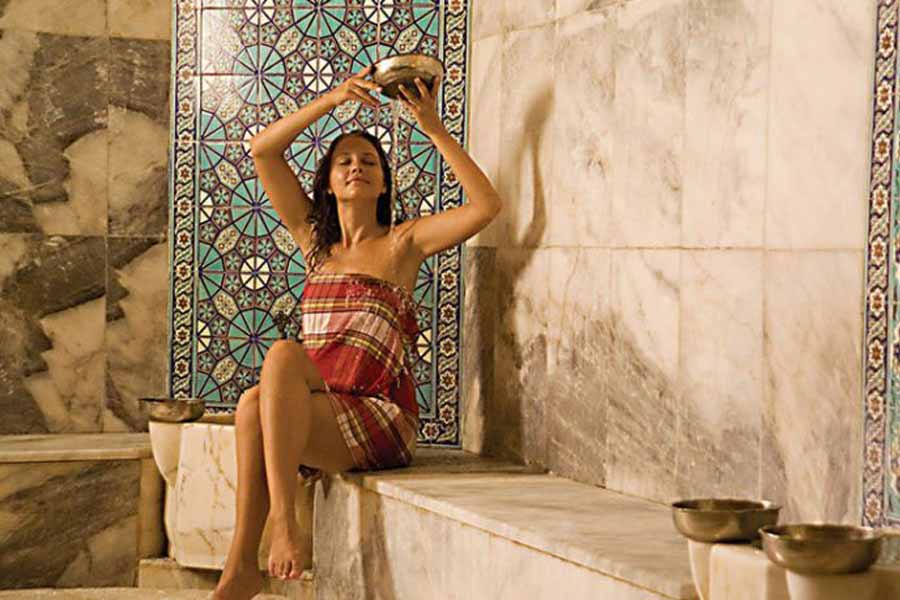Water is sacred in all religions and it purifies the body and soul.
That dates back to the Romans and Turks turned it into a style combined with the cleanliness and hygienic rules instructed by Islam. When the word ‘’hamam’’ (bath house) which meant the place where you wash yourself, was added to the concept, this style was called a Turk Hamamı (Turkish bath house). It became a culture with masseurs, pattens, bath stones, and marble washing platforms. In the past, bathrooms in houses were primitive and there was no running water inside houses. Thus, bathhouses were an essential part of the social life, especially of Ottoman women, who lived a closed life. Rinsing the baby at the end of his/her first forty days of life, evaluation of young girls by mothers of young men for marriage, and bridal baths prior to weddings were all social actives of the bathhouse culture. Stuffed vegetables (dolma), meatballs and desserts would be prepared and the level of entertainment would be enhanced with dancers and musicians. Women of wealthy families would also bring their servants with them. Their pattens and cloths were made from valuable materials and they would leave generous tips.
Cemberlitas Bathhouse
This bathhouse was commissioned by Nurbanu Sultan, mother of Sultan Murad III, in 1584. Its architect was Mimar Sinan. It is a double bathhouse with separate sections for men and women.
Cagaloglu Bathhouse
 This bath house was commissioned by Sultan Mahmud I and built in 1741 to raise funds for Hagia Sophia Mosque. Its architect is unknown. It is a double bathhouse with separate sections for men and women. It is the last big bathhouse inside which the baroque style was applied.
This bath house was commissioned by Sultan Mahmud I and built in 1741 to raise funds for Hagia Sophia Mosque. Its architect is unknown. It is a double bathhouse with separate sections for men and women. It is the last big bathhouse inside which the baroque style was applied.Sultanahmet Bathhouse
It is said that this building was a library built for an important person in the Byzantine Era and that it was put into service as a bathhouse after some additions were made to it in 1710.
Suleymaniye Bathhouse
This bath was built in 1557. The eight marble pillars surrounding the marble washing platform are spectacular.
Eski Bathhouse
 This 15th century bathhouse, also known as Sifa Hamamı, was built as a double bathhouse. Although it is the oldest bathhouse in Uskudar, it has preserved its authenticity up to the present.
This 15th century bathhouse, also known as Sifa Hamamı, was built as a double bathhouse. Although it is the oldest bathhouse in Uskudar, it has preserved its authenticity up to the present.Galatasaray Bathhouse
This was built as a public bazaar bathhouse in 1715 in the classical Turkish Bathhouse architecture. The main lines of the design were preserved during the restoration in 1965. It offers services for both foreign and local tourists.

